From our temporary accommodation in Birchs Bay Tasmania, we look out every day across the D’Entrecasteaux Channel to the shores of neighbouring Bruny Island. The ferry operates from Kettering, a few minutes up the road, so it would have been rude not to go and explore.
The island is 50km long and made up of North and South Bruny Islands which are separated by a narrow isthmus, known as The Neck. The North is largely given over to sheep farming, while the South is mostly National Park that is inaccessible to traffic. The easiest way to explore is by boat, and the best way to do this is through Pennicott Wilderness Journeys.
We caught the Pennicott bus from Kettering, which took us across on the ferry and then through North Bruny Island, across The Neck (stopping to look at the views and penguin rookery), and then boarded one of their iconic yellow RIBs at their base (and seafood restaurant) in Adventure Bay.
Almost as soon as we had left the dock, we were surrounded by bottlenose dolphins.
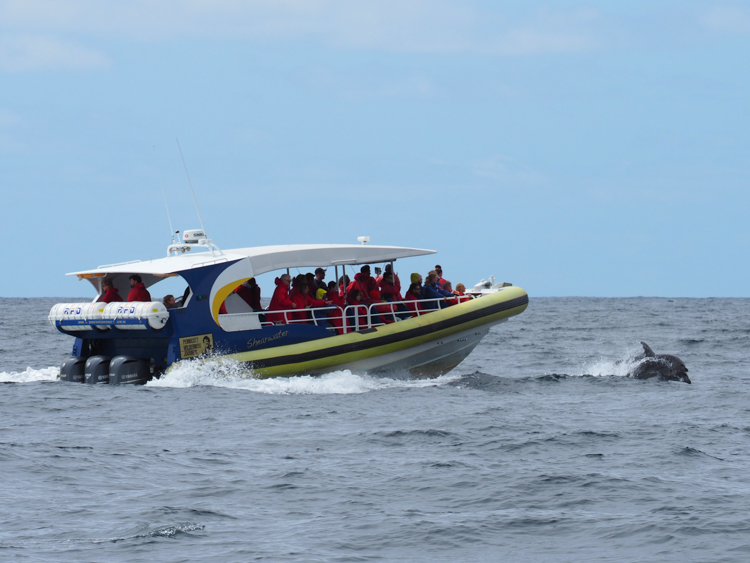
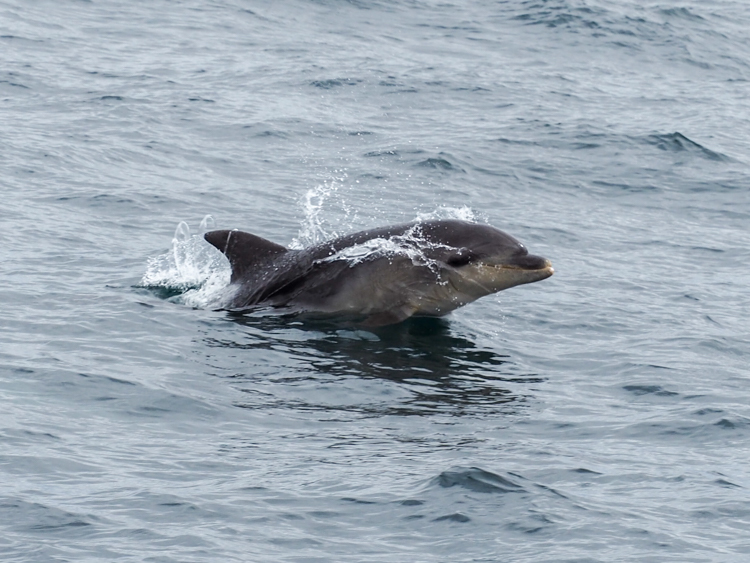
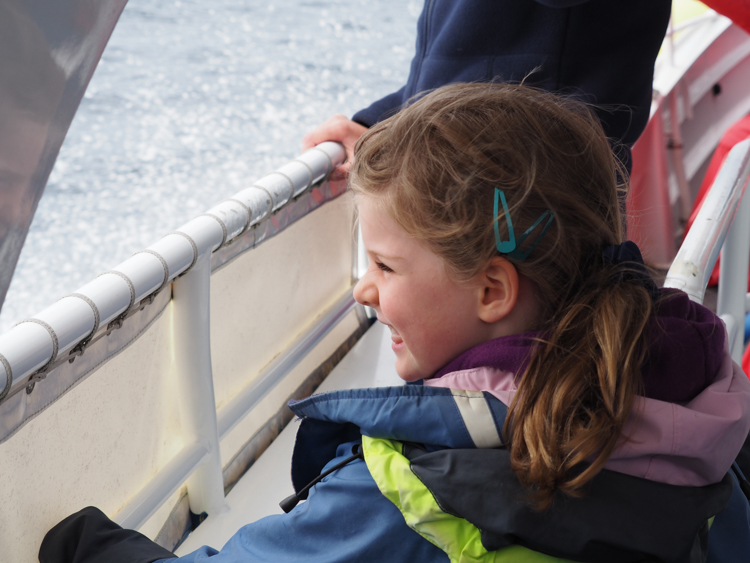
The dolphins loved the powerful wake of the triple 250hp outboards, and our skipper Mick ran doughnuts so that they could play in the waves. As with whales, dolphins have this remarkable ability to make humans laugh and smile when we see them exuberantly playing in the wild. It was a great start to what was going to be a wonderful cruise.
Leaving the dolphins behind, we began to explore the towering columns of Jurassic dolerite that form South Bruny Island’s Fluted Cape. The flat-bottomed boat could get up close and personal with the rock formations and caves, and had more than enough power to get in an out against the swell.
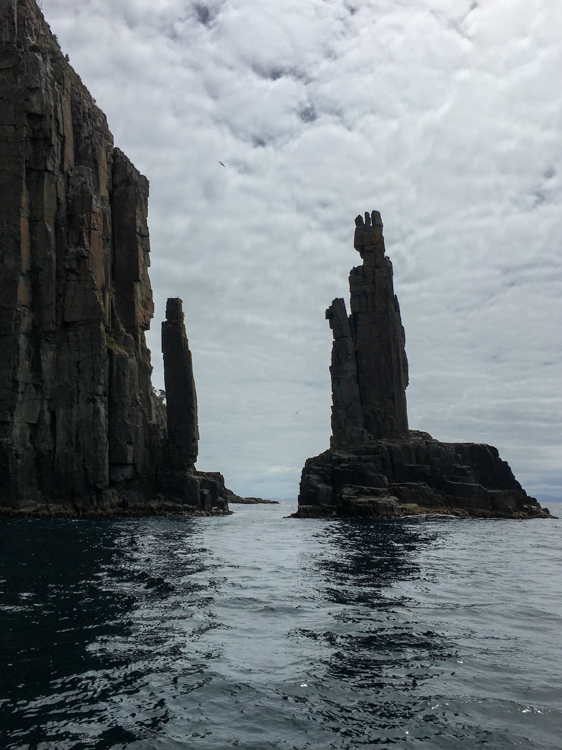
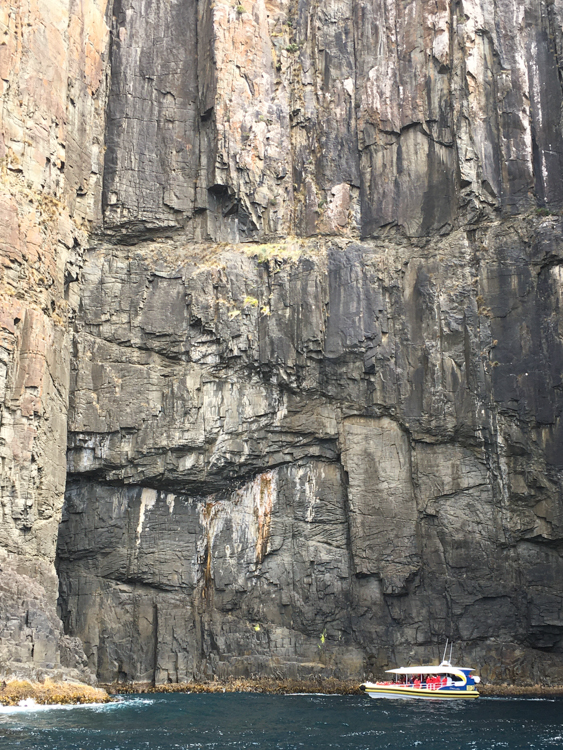
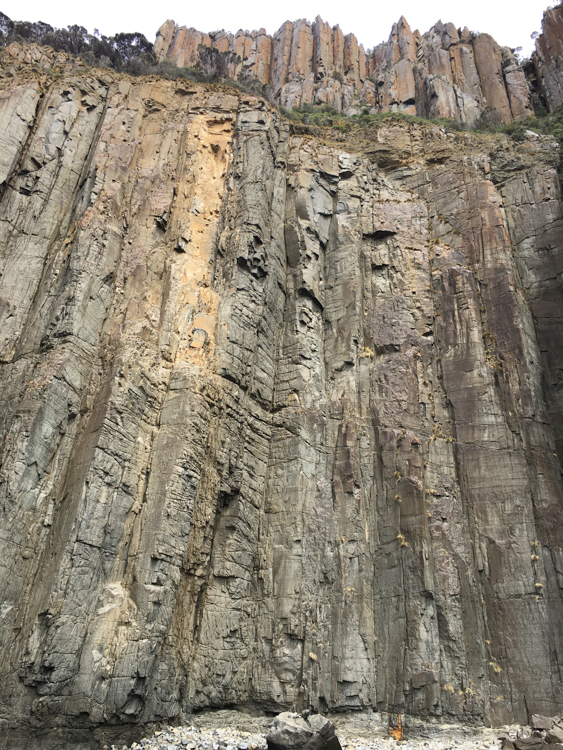
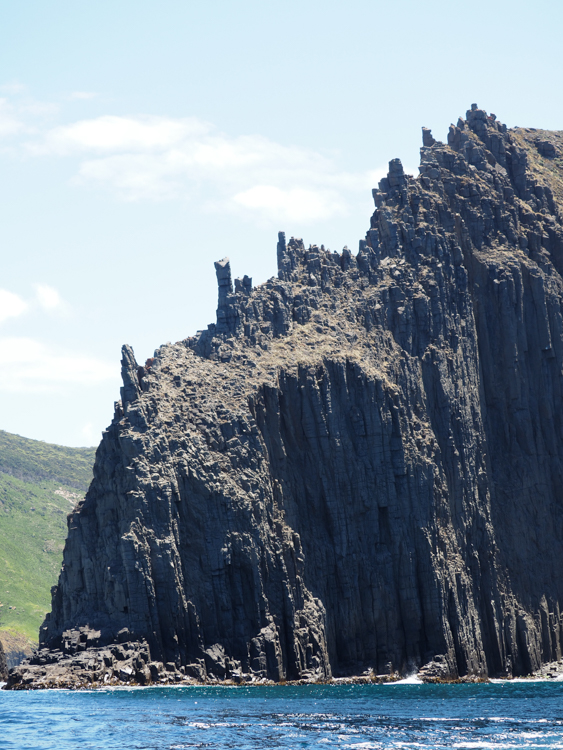
The cliffs are stupendous, among the tallest dolerite columns in the world. They are perforated by numerous sea caves, one of which is largely underwater and forms a spectacular blow-hole as wet air is pumped out by the swell pushing in. The skipper amused the crowd by poking the boat’s bow into the top of the cave as it spat salty spray all over us.
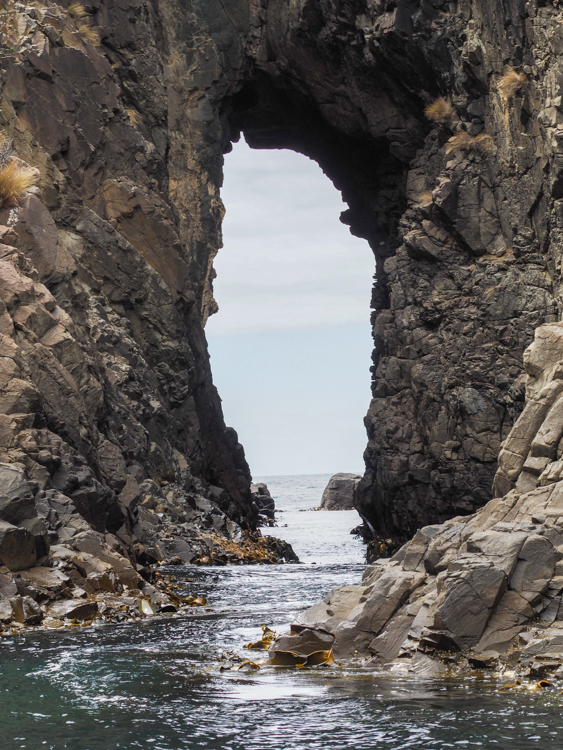
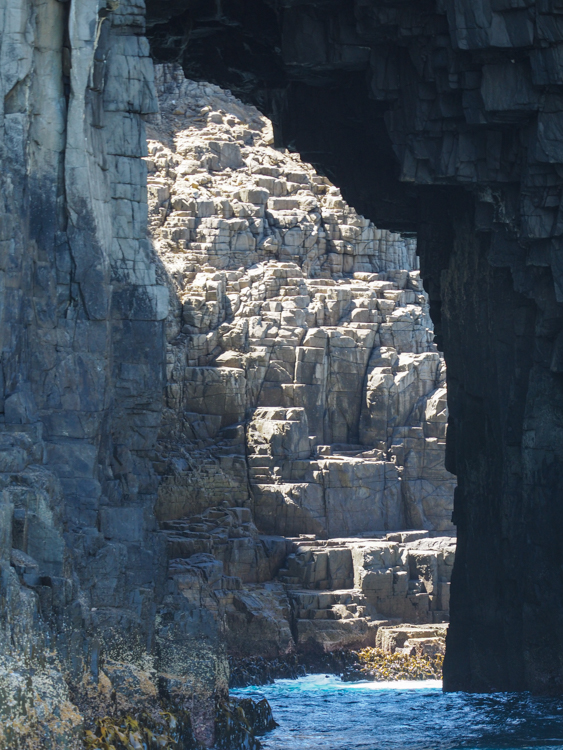
Nearby was an island colony of black-faced shags, who seemed completely unperturbed by our presence. They’re fairly common on islets off Southern Australia, building their nests from seaweed and driftwood.
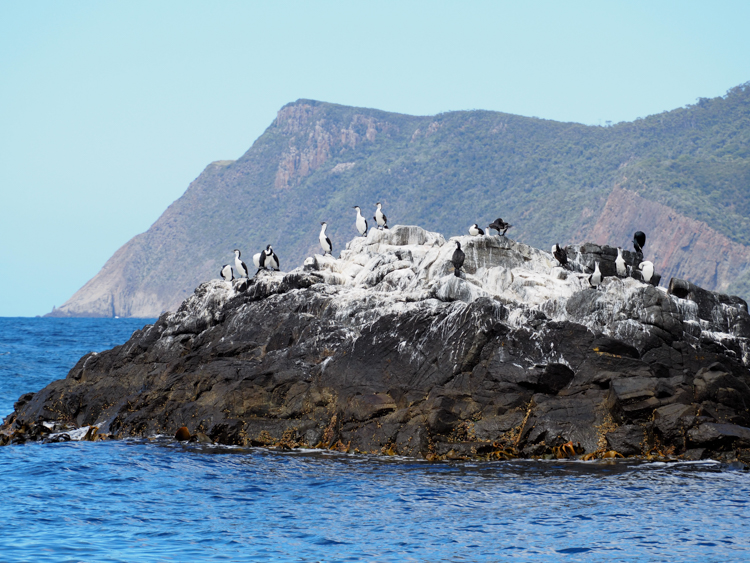
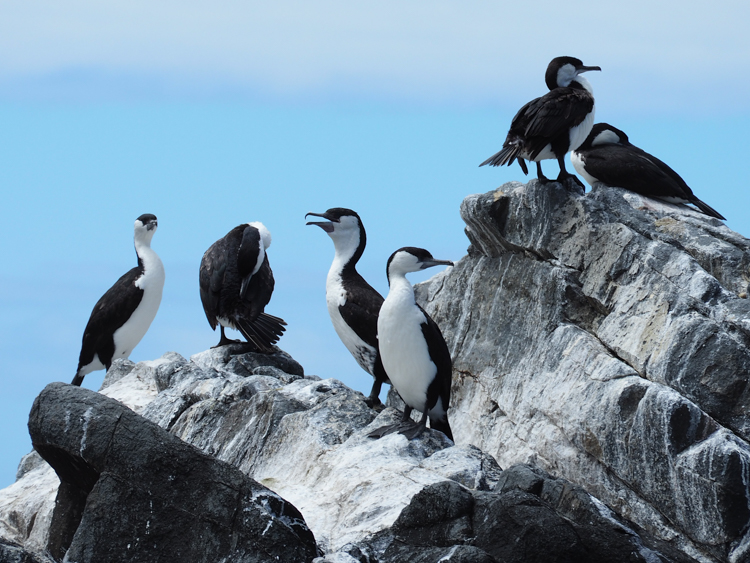
Rounding the Cape, we found ourselves out in the Southern Ocean. The skipper opened the throttle, the three 250 horsepower Yamahas on the stern kicked in, and we blew past the aptly named Bridge Island, heading south.
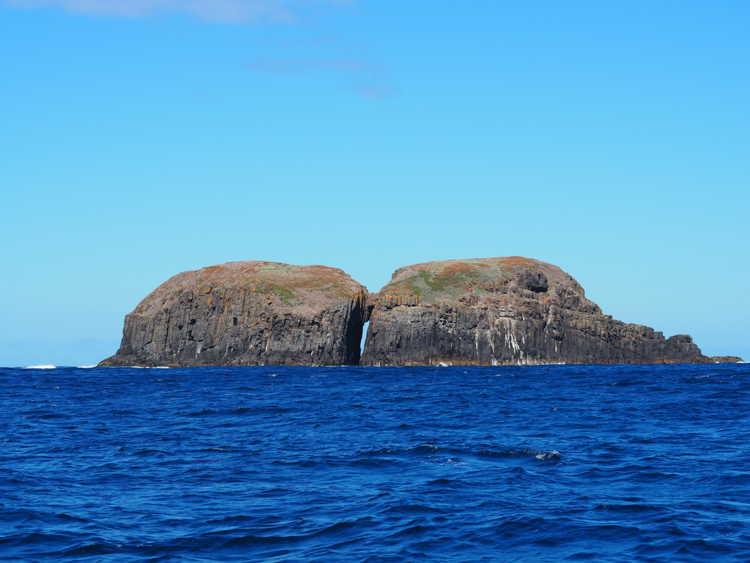
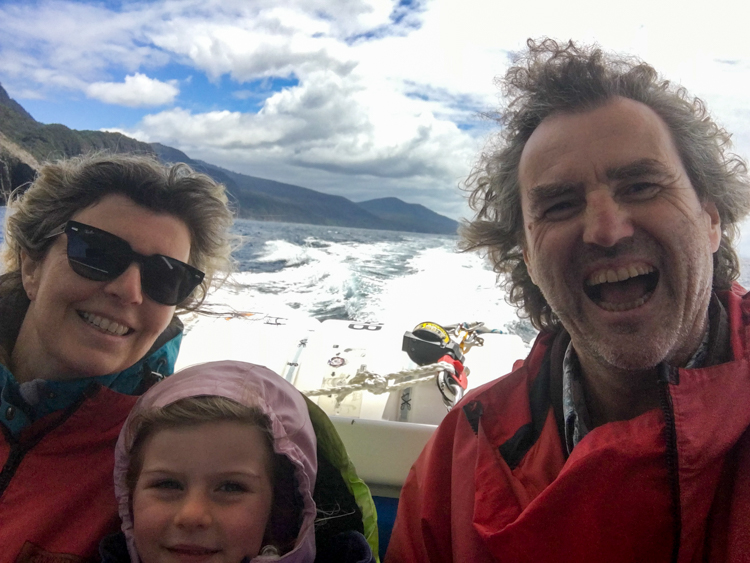
We were motoring toward a group of four dolerite islands known collectively as The Friars, home to a male colony of rare Australian Fur Seals. They live here in a somewhat cantankerous group, travelling to the Bass Strait to meet up with females in October, each one potentially servicing up to 50 females before returning home, presumably exhausted and ready to rest for another year.
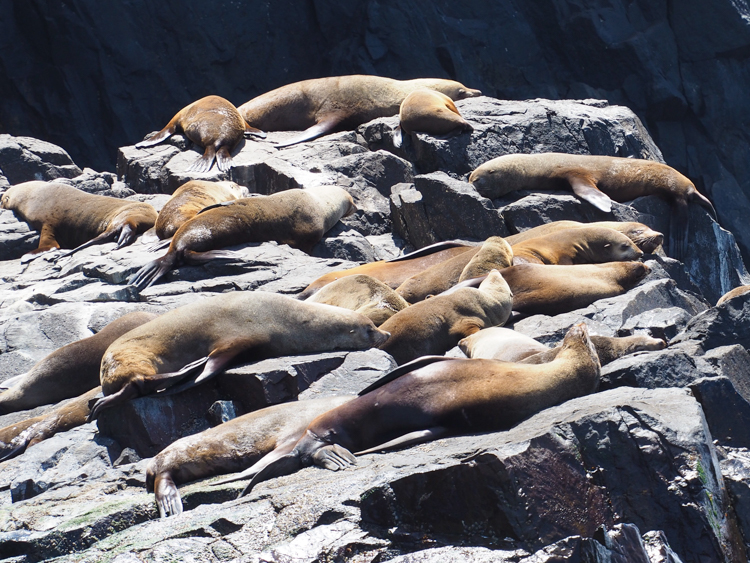
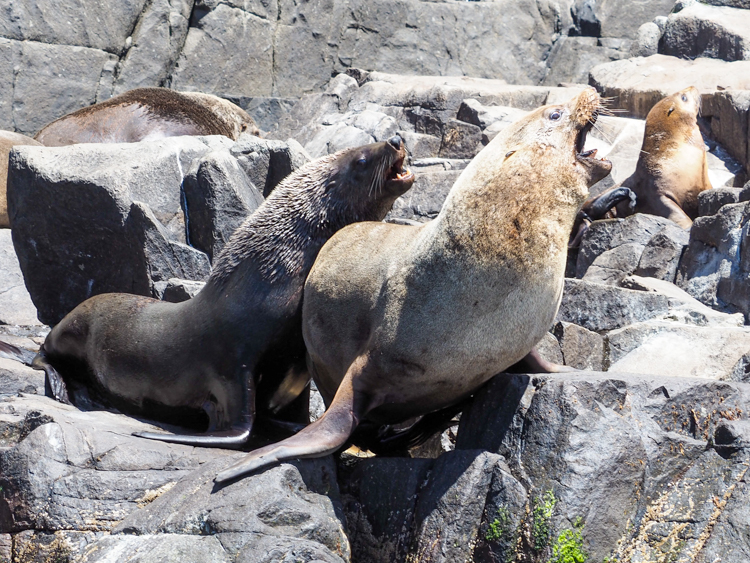
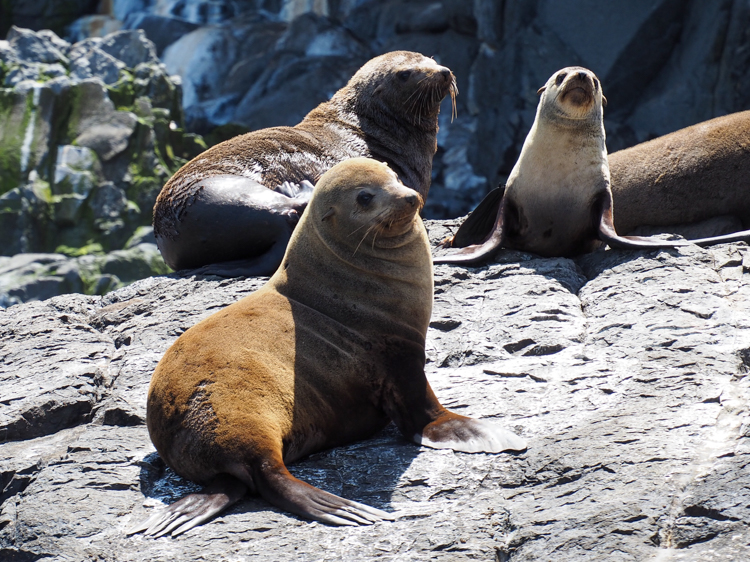
Around the corner is a colony of animals formerly known as New Zealand Fur Seals, more recently termed Long Nosed Fur Seals. They are closely related to the Australian, but form separate colonies.
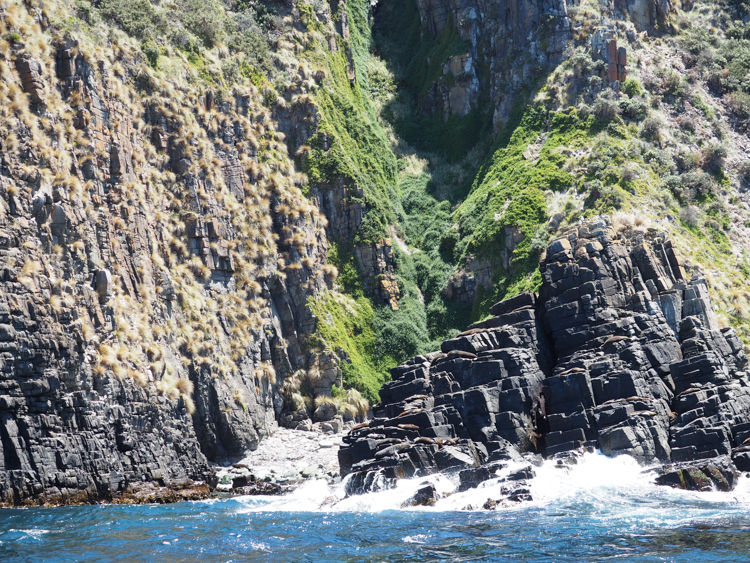
On a beach all by itself, we were lucky to see an Elephant Seal. A few years ago, an 800kg female of this species rampaged through the camp site at Adventure Bay, damaging a caravan and demolishing fences and picnic tables. She was eventually lured away by a fish on a piece of string. The one that we saw was pretty placid, though.
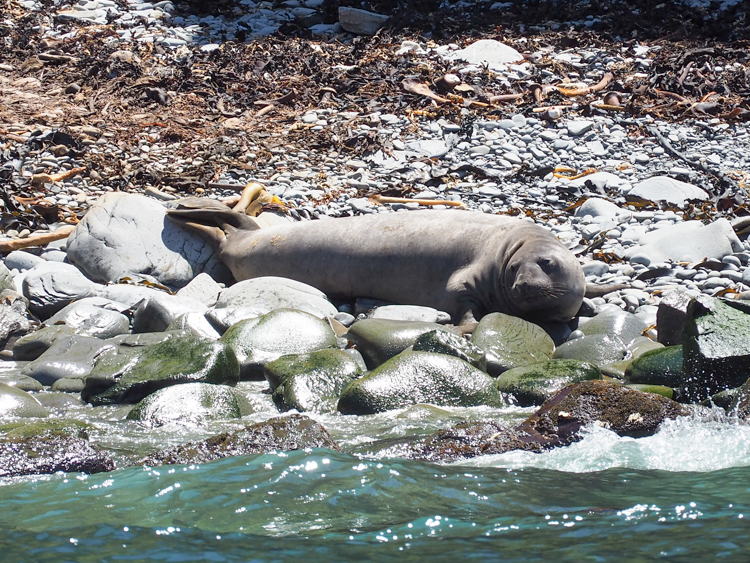
Turning back toward South Bruny Island, my breath was taken away by the beauty of the landscape. The sea and the sky matched in shades of vivid blue, and across the towering dolerite peaks of Fluted Cape, the highlands of mainland Tasmania loomed in the distance.
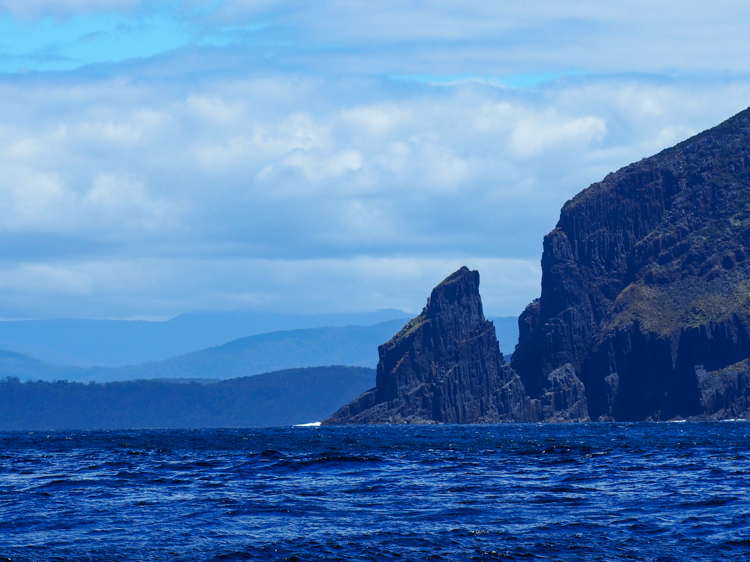
We’re living at the bottom of the world, and we love it!
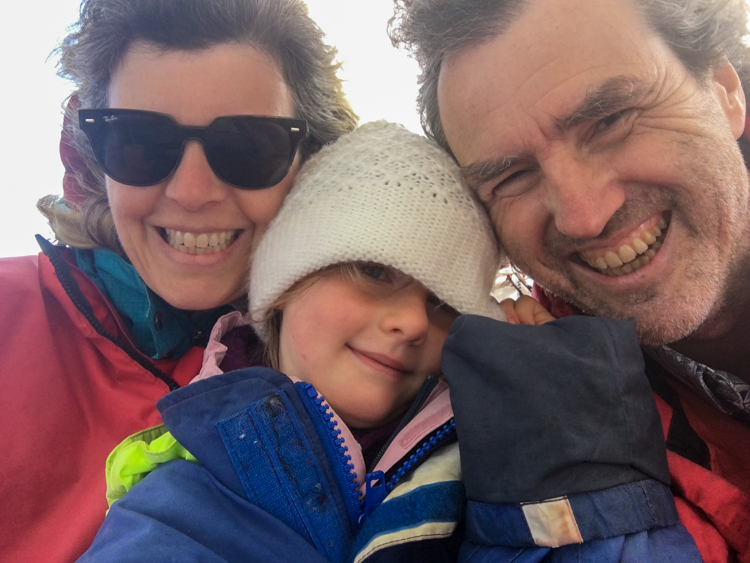
What a beautiful views!!!
<3